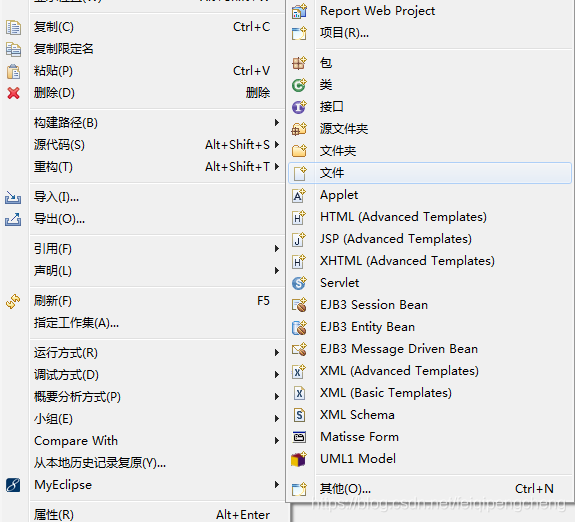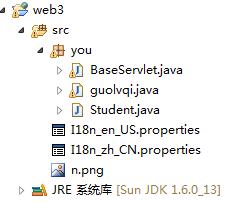JSON
介绍
JSON (JavaScript Object Notation) 是一种轻量级的数据交换格式。易于人阅读和编写。同时也易于机器解析和生成。JSON 采用完全独立于语言的文本格式,而且很多语言都提供了对 json 的支持(包括 C, C++, C#, Java, JavaScript, Perl, Python 等)。 这样就使得 JSON 成为理想的数据交换格式。
json 是一种轻量级的数据交换格式。
轻量级指的是跟 xml 做比较。
数据交换指的是客户端和服务器之间业务数据的传递格式。
JSON 在 JavaScript 中的使用
代码:
<!DOCTYPE html PUBLIC "-//W3C//DTD HTML 4.01 Transitional//EN" "http://www.w3.org/TR/html4/loose.dtd">
<html>
<head>
<meta http-equiv="pragma" content="no-cache" />
<meta http-equiv="cache-control" content="no-cache" />
<meta http-equiv="Expires" content="0" />
<meta http-equiv="Content-Type" content="text/html; charset=UTF-8">
<title>Insert title here</title>
<script type="text/javascript">
// json的定义
var jsonObj = {
"key1":12,
"key2":"abc",
"key3":true,
"key4":[11,"arr",false],
"key5":{
"key5_1" : 551,
"key5_2" : "key5_2_value"
},
"key6":[{
"key6_1_1":6611,
"key6_1_2":"key6_1_2_value"
},{
"key6_2_1":6621,
"key6_2_2":"key6_2_2_value"
}]
};
alert(typeof(jsonObj));// object json就是一个对象
// alert(jsonObj.key1); //12
// alert(jsonObj.key2); // abc
// alert(jsonObj.key3); // true
// alert(jsonObj.key4);// 得到数组[11,"arr",false]
// // json 中 数组值的遍历
// for(var i = 0; i < jsonObj.key4.length; i++) {
// alert(jsonObj.key4[i]);
// }
// alert(jsonObj.key5.key5_1);//551
// alert(jsonObj.key5.key5_2);//key5_2_value
// alert( jsonObj.key6 );// 得到json数组
//
// // 取出来每一个元素都是json对象
// var jsonItem = jsonObj.key6[0];
// // alert( jsonItem.key6_1_1 ); //6611
// alert( jsonItem.key6_1_2 ); //key6_1_2_value
// alert(jsonObj);
// 把json对象转换成为 json字符串
var jsonObjString = JSON.stringify(jsonObj); // 特别像 Java中对象的toString
alert(jsonObjString)
// 把json字符串。转换成为json对象
var jsonObj2 = JSON.parse(jsonObjString);
alert(jsonObj2.key1);// 12
alert(jsonObj2.key2);// abc
// json的访问
// json对象转字符串
// json字符串转json对象
</script>
</head>
<body>
</body>
</html>
json 的定义
json 是由键值对组成,并且由花括号(大括号)包围。每个键由引号引起来,键和值之间使用冒号进行分隔, 多组键值对之间进行逗号进行分隔。
json 的访问
json 本身是一个对象。 .
json 中的 key 我们可以理解为是对象中的一个属性。
json 中的 key 访问就跟访问对象的属性一样: json 对象.key
json 的两个常用方法
json 的存在有两种形式。
一种是:对象的形式存在,我们叫它 json 对象。
一种是:字符串的形式存在,我们叫它 json 字符串。
一般我们要操作 json 中的数据的时候,需要 json 对象的格式。
一般我们要在客户端和服务器之间进行数据交换的时候,使用 json 字符串。
JSON.stringify() 把 json 对象转换成为 json 字符串
JSON.parse() 把 json 字符串转换成为 json 对象
JSON 在 java 中的使用
javaBean 和 json 的互转
javaBean类:
package you;
public class Student {
private int id;
private String name;
public Student(int id, String name) {
this.id = id;
this.name = name;
}
public Student() {
super();
// TODO Auto-generated constructor stub
}
public int getId() {
return id;
}
public void setId(int id) {
this.id = id;
}
public String getName() {
return name;
}
public void setName(String name) {
this.name = name;
}
@Override
public String toString() {
// TODO Auto-generated method stub
return "id:"+id+" name:"+name;
}
}
测试javaBean;
package you;
import org.junit.Test;
import com.google.gson.Gson;
public class test {
@Test
public void test1(){
Student s=new Student(1,"name");
// 创建 Gson 对象实例
Gson gson = new Gson();
// toJson 方法可以把 java 对象转换成为 json 字符串
String personJsonString = gson.toJson(s);
System.out.println(personJsonString);
// fromJson 把 json 字符串转换回 Java 对象
// 第一个参数是 json 字符串
// 第二个参数是转换回去的 Java 对象类型
s = gson.fromJson(personJsonString, Student.class);
System.out.println(s); }
}
List 和 json 的互转
StudentType类
import java.util.ArrayList;
import com.google.gson.reflect.TypeToken;
public class StudentType extends TypeToken<ArrayList<Student>> {
}
测试方法
根据前面的javaBean 和 json 的互转改换
@Test
public void test2() {
List<Student> personList = new ArrayList<Student>();
personList.add(new Student(1, "name1"));
personList.add(new Student(2, "name2"));
Gson gson = new Gson();
// 把 List 转换为 json 字符串
String personListJsonString = gson.toJson(personList);
System.out.println(personListJsonString);
List<Student> list = gson.fromJson(personListJsonString, new StudentType().getType());
System.out.println(list);
Student person = list.get(0);
System.out.println(person); }
map 和 json 的互转
StudentType
import java.util.ArrayList;
import java.util.Map;
import com.google.gson.reflect.TypeToken;
public class StudentType extends TypeToken<Map<Integer,Student>> {
}
test
根据前面的javaBean 和 json 的互转改换
@Test
public void test3(){
Map<Integer,Student> personMap = new HashMap<Integer,Student>();
personMap.put(1, new Student(1, "name1"));
personMap.put(2, new Student(2, "name2"));
Gson gson = new Gson();
// 把 map 集合转换成为 json 字符串
String personMapJsonString = gson.toJson(personMap);
System.out.println(personMapJsonString);
Map<Integer,Student> personMap2 = gson.fromJson(personMapJsonString, new StudentType().getType());
//第二种匿名内部类,这样不用写StudentType类
//Map<Integer,Student> personMap2 = gson.fromJson(personMapJsonString, new TypeToken<HashMap<Integer,Student>>(){}.getType());
System.out.println(personMap2);
Student p = personMap2.get(1);
System.out.println(p); }
AJAX 请求
介绍
AJAX 即“Asynchronous Javascript And XML”(异步 JavaScript 和 XML),是指一种创建交互式网页应用的网页开发 技术。
ajax 是一种浏览器通过 js 异步发起请求,局部更新页面的技术。 Ajax 请求的局部更新,浏览器地址栏不会发生变化 局部更新不会舍弃原来页面的内容
Student
public class Student {
private int id;
private String name;
public Student(int id, String name) {
this.id = id;
this.name = name;
}
public Student() {
super();
// TODO Auto-generated constructor stub
}
public int getId() {
return id;
}
public void setId(int id) {
this.id = id;
}
public String getName() {
return name;
}
public void setName(String name) {
this.name = name;
}
@Override
public String toString() {
// TODO Auto-generated method stub
return "id:"+id+" name:"+name;
}
}
BaseServlet
import javax.servlet.ServletException;
import javax.servlet.http.HttpServlet;
import javax.servlet.http.HttpServletRequest;
import javax.servlet.http.HttpServletResponse;
import com.google.gson.Gson;
import java.io.IOException;
import java.lang.reflect.Method;
public class BaseServlet extends HttpServlet {
@Override
protected void doGet(HttpServletRequest req, HttpServletResponse resp) throws ServletException, IOException {
System.out.println("please");
Student s=new Student(1,"name1");
Gson gson=new Gson();
String v=gson.toJson(s);
resp.getWriter().write(v);
}
protected void doPost(HttpServletRequest req, HttpServletResponse resp) throws ServletException, IOException {
super.doPost(req, resp);
}
}
ajax.html
<!DOCTYPE html PUBLIC "-//W3C//DTD HTML 4.01 Transitional//EN" "http://www.w3.org/TR/html4/loose.dtd">
<html>
<head>
<meta http-equiv="pragma" content="no-cache" />
<meta http-equiv="cache-control" content="no-cache" />
<meta http-equiv="Expires" content="0" />
<meta http-equiv="Content-Type" content="text/html; charset=UTF-8">
<title>Insert title here</title>
<script type="text/javascript">
// 在这里使用javaScript语言发起Ajax请求,访问服务器AjaxServlet中javaScriptAjax
function ajaxRequest() {
// 1、我们首先要创建XMLHttpRequest
var xmlhttprequest = new XMLHttpRequest();
// 2、调用open方法设置请求参数
xmlhttprequest.open("GET","http://pc202004141500:8080/web3/BaseServlet?action=dog",true);
// 4、在send方法前绑定onreadystatechange事件,处理请求完成后的操作。
xmlhttprequest.onreadystatechange = function(){
if (xmlhttprequest.readyState == 4 && xmlhttprequest.status == 200) {
// alert("收到服务器返回的数据:" + xmlhttprequest.responseText);
var jsonObj = JSON.parse(xmlhttprequest.responseText);
// 把响应的数据显示在页面上
document.getElementById("div01").innerHTML = "编号:" + jsonObj.id + " , 姓名:" + jsonObj.name;
}
}
// 3、调用send方法发送请求
xmlhttprequest.send();
alert("我是最后一行的代码");
}
</script>
</head>
<body>
<button onclick="ajaxRequest()">ajax request</button>
<div id="div01">
</div>
</body>
</html>
jQuery 中的 AJAX 请求
$.ajax 方法
url 表示请求的地址
type 表示请求的类型 GET 或 POST 请求
data 表示发送给服务器的数据 格式有两种:
一:name=value&name=value
二:{key:value}
success 请求成功,响应的回调函数
dataType 响应的数据类型 常用的数据类型有: text 表示纯文本 xml 表示 xml 数据 json 表示 json 对象
用到前面的student类和Baseservlet类
例子:
<!DOCTYPE html PUBLIC "-//W3C//DTD HTML 4.01 Transitional//EN" "http://www.w3.org/TR/html4/loose.dtd">
<html>
<head>
<meta http-equiv="pragma" content="no-cache" />
<meta http-equiv="cache-control" content="no-cache" />
<meta http-equiv="Expires" content="0" />
<meta http-equiv="Content-Type" content="text/html; charset=UTF-8">
<title>Insert title here</title>
<script src="https://cdn.staticfile.org/jquery/1.10.2/jquery.min.js"></script>
<script type="text/javascript">
$(function(){
// ajax请求
$("#ajaxBtn").click(function(){
$.ajax({
url:"http://pc202004141500:8080/web3/BaseServlet",
// data:"action=jQueryAjax",这两种都可以
data:{action:"doGet"},
type:"GET",
success:function (data) {
alert("服务器返回的数据是:" + data);
var jsonObj = JSON.parse(data);
$("#msg").html(" ajax 编号:" + jsonObj.id + " , 姓名:" + jsonObj.name);
},
dataType : "text"//如果是json,success方法换成$("#msg").html(" ajax 编号:" + data.id + " , 姓名:" + data.name);
});
});
});
</script>
</head>
<body>
<div>
<button id="ajaxBtn">ajax</button>
</div>
<div id="msg">
</div>
</body>
</html>
$ .get 方法和$.post 方法
url 请求的 url 地址
data 发送的数据
callback 成功的回调函数
type 返回的数据类型
例子:
用到前面的student类和Baseservlet类
改善Basebean
import javax.servlet.ServletException;
import javax.servlet.http.HttpServlet;
import javax.servlet.http.HttpServletRequest;
import javax.servlet.http.HttpServletResponse;
import com.google.gson.Gson;
import java.io.IOException;
import java.lang.reflect.Method;
public class BaseServlet extends HttpServlet {
@Override
protected void doGet(HttpServletRequest req, HttpServletResponse resp) throws ServletException, IOException {
System.out.println("ajax 执行doget");
Student s=new Student(1,"name1");
Gson gson=new Gson();
String v=gson.toJson(s);
System.out.println(v);
resp.getWriter().write(v);
}
protected void doPost(HttpServletRequest req, HttpServletResponse resp) throws ServletException, IOException {
doGet(req, resp);
}
}
html
<!DOCTYPE html PUBLIC "-//W3C//DTD HTML 4.01 Transitional//EN" "http://www.w3.org/TR/html4/loose.dtd">
<html>
<head>
<meta http-equiv="pragma" content="no-cache" />
<meta http-equiv="cache-control" content="no-cache" />
<meta http-equiv="Expires" content="0" />
<meta http-equiv="Content-Type" content="text/html; charset=UTF-8">
<title>Insert title here</title>
<script src="https://cdn.staticfile.org/jquery/1.10.2/jquery.min.js"></script>
<script type="text/javascript">
$(function(){
// ajax请求
//get请求
$("#get").click(function(){
$.get(
"http://pc202004141500:8080/web3/BaseServlet",
"action=doGet",function(data){
$("#msg").html(" get编号:" + data.id + " , 姓名:" + data.name);},"json"
);
});
//post请求
$("#post").click(function(){
$.post(
"http://pc202004141500:8080/web3/BaseServlet",
"action=doGet",function(data){
$("#msg").html(" post编号:" + data.id + " , 姓名:" + data.name);},"json"
);
});
});
</script>
</head>
<body>
<div>
<button id ="get">get</button>
<button id ="post">post</button>
</div>
<div id="msg">
</div>
</body>
</html>
$.getJSON 方法
自动get请求json返回
url 请求的 url 地址
data 发送给服务器的数据
callback 成功的回调函数
用到前面的student类和Baseservlet类
例子:
<!DOCTYPE html PUBLIC "-//W3C//DTD HTML 4.01 Transitional//EN" "http://www.w3.org/TR/html4/loose.dtd">
<html>
<head>
<meta http-equiv="pragma" content="no-cache" />
<meta http-equiv="cache-control" content="no-cache" />
<meta http-equiv="Expires" content="0" />
<meta http-equiv="Content-Type" content="text/html; charset=UTF-8">
<title>Insert title here</title>
<script src="https://cdn.staticfile.org/jquery/1.10.2/jquery.min.js"></script>
<script type="text/javascript">
$(function(){
$("#getjson").click(function(){
$.getJSON(
"http://pc202004141500:8080/web3/BaseServlet",
"action=doGet",function(data){
$("#msg").html(" getjson编号:" + data.id + " , 姓名:" + data.name);}
);
});
});
</script>
</head>
<body>
<div>
<button id ="getjson">getjson</button>
</div>
<div id="msg">
</div>
</body>
</html>
表单序列化 serialize()
serialize()可以把表单中所有表单项的内容都获取到,并以 name=value&name=value 的形式进行拼接。
用到前面的student类和Baseservlet类
例子:
改善Baseservlet
import javax.servlet.ServletException;
import javax.servlet.http.HttpServlet;
import javax.servlet.http.HttpServletRequest;
import javax.servlet.http.HttpServletResponse;
import com.google.gson.Gson;
import java.io.IOException;
import java.lang.reflect.Method;
public class BaseServlet extends HttpServlet {
@Override
protected void doGet(HttpServletRequest req, HttpServletResponse resp) throws ServletException, IOException {
System.out.println(req.getParameter("username")+" "+req.getParameter("password"));
Student s=new Student(1,"name1");
Gson gson=new Gson();
String v=gson.toJson(s);
System.out.println(v);
resp.getWriter().write(v);
}
protected void doPost(HttpServletRequest req, HttpServletResponse resp) throws ServletException, IOException {
doGet(req, resp);
}
}
html
<!DOCTYPE html PUBLIC "-//W3C//DTD HTML 4.01 Transitional//EN" "http://www.w3.org/TR/html4/loose.dtd">
<html>
<head>
<meta http-equiv="pragma" content="no-cache" />
<meta http-equiv="cache-control" content="no-cache" />
<meta http-equiv="Expires" content="0" />
<meta http-equiv="Content-Type" content="text/html; charset=UTF-8">
<title>Insert title here</title>
<script src="https://cdn.staticfile.org/jquery/1.10.2/jquery.min.js"></script>
<script type="text/javascript">
$(function(){
$("#sumbit").click(function(){
alert($("#form01").serialize());
$.getJSON(
"http://pc202004141500:8080/web3/BaseServlet",
"action=doGet&"+$("#form01").serialize(),function(data){
$("#msg").html(" getjson编号:" + data.id + " , 姓名:" + data.name);}
);
});
});
</script>
</head>
<body>
<div>
<button id ="sumbit">sumbit</button>
<form id="form01" >
用户名:<input name="username" type="text" /><br/>
密码:<input name="password" type="password" /><br/>
</form>
</div>
<div id="msg">
</div>
</body>
</html>
i18n 国际化
介绍
国际化(Internationalization)指的是同一个网站可以支持多种不同的语言,以方便不同国家,不同语种的用户访问。
关于国际化我们想到的最简单的方案就是为不同的国家创建不同的网站,比如苹果公司,他的英文官网是: http://www.apple.com 而中国官网是 http://www.apple.com/cn
苹果公司这种方案并不适合全部公司,而我们希望相同的一个网站,而不同人访问的时候可以根据用户所在的区域显示 不同的语言文字,而网站的布局样式等不发生改变。
于是就有了我们说的国际化,国际化总的来说就是同一个网站不同国家的人来访问可以显示出不同的语言。但实际上这 种需求并不强烈,一般真的有国际化需求的公司,主流采用的依然是苹果公司的那种方案,为不同的国家创建不同的页 面。所以国际化的内容我们了解一下即可。
国际化的英文 Internationalization,但是由于拼写过长,老外想了一个简单的写法叫做 I18N,代表的是 Internationalization 这个单词,以 I 开头,以 N 结尾,而中间是 18 个字母,所以简写为 I18N。以后我们说 I18N 和国际化是一个意思。
国际化相关要素介绍

配置文件



代码实例:
package com.atguigu.i18n;
import org.junit.Test;
import java.util.Locale;
import java.util.ResourceBundle;
public class I18nTest {
@Test
public void testLocale(){
// 获取你系统默认的语言。国家信息
// Locale locale = Locale.getDefault();
// System.out.println(locale);
// for (Locale availableLocale : Locale.getAvailableLocales()) {
// System.out.println(availableLocale);
// }
// 获取中文,中文的常量的Locale对象
System.out.println(Locale.CHINA);
// 获取英文,美国的常量的Locale对象
System.out.println(Locale.US);
}
@Test
public void testI18n(){
// 得到我们需要的Locale对象
Locale locale = Locale.CHINA;
// 通过指定的basename和Locale对象,读取 相应的配置文件
ResourceBundle bundle = ResourceBundle.getBundle("i18n", locale);
System.out.println("username:" + bundle.getString("username"));
System.out.println("password:" + bundle.getString("password"));
System.out.println("Sex:" + bundle.getString("sex"));
System.out.println("age:" + bundle.getString("age"));
}
}
通过请求头国际化页面
结合前面的配置文件
jsp
<%@ page import="java.util.*" %>
<%@ page language="java" contentType="text/html; charset=UTF-8"
pageEncoding="UTF-8"%>
<html>
<head>
<title>$Title$</title>
</head>
<body>
<%Locale l=request.getLocale();
System.out.println(l);
ResourceBundle b = ResourceBundle.getBundle("i18n", l);
%>
<h1><%=b.getString("username") %></h1>
</body>
</html>
通过显示的选择语言类型进行国际化
<%@ page import="java.util.*" %>
<%@ page import="java.util.ResourceBundle" %>
<%@ page language="java" contentType="text/html; charset=UTF-8"
pageEncoding="UTF-8"%>
<!DOCTYPE html PUBLIC "-//W3C//DTD HTML 4.01 Transitional//EN" "http://www.w3.org/TR/html4/loose.dtd">
<html>
<head>
<meta http-equiv="pragma" content="no-cache" />
<meta http-equiv="cache-control" content="no-cache" />
<meta http-equiv="Expires" content="0" />
<meta http-equiv="Content-Type" content="text/html; charset=UTF-8">
<title>Insert title here</title>
</head>
<body>
<%
// 从请求头中获取Locale信息(语言)
Locale locale = null;
String country = request.getParameter("country");
if ("cn".equals(country)) {
locale = Locale.CHINA;
} else if ("usa".equals(country)) {
locale = Locale.US;
} else {
locale = request.getLocale();
}
System.out.println(locale);
// 获取读取包(根据 指定的baseName和Locale读取 语言信息)
ResourceBundle i18n = ResourceBundle.getBundle("i18n", locale);
%>
<a href="i18n.jsp?country=cn">中文</a>|
<a href="i18n.jsp?country=usa">english</a>
<center>
<h1><%=i18n.getString("regist")%></h1>
<table>
<form>
<tr>
<td><%=i18n.getString("username")%></td>
<td><input name="username" type="text" /></td>
</tr>
<tr>
<td><%=i18n.getString("password")%></td>
<td><input type="password" /></td>
</tr>
<tr>
<td><%=i18n.getString("sex")%></td>
<td>
<input type="radio" /><%=i18n.getString("boy")%>
<input type="radio" /><%=i18n.getString("girl")%>
</td>
</tr>
<tr>
<td><%=i18n.getString("email")%></td>
<td><input type="text" /></td>
</tr>
<tr>
<td colspan="2" align="center">
<input type="reset" value="<%=i18n.getString("reset")%>" />
<input type="submit" value="<%=i18n.getString("submit")%>" /></td>
</tr>
</form>
</table>
<br /> <br /> <br /> <br />
</center>
国际化测试:
<br /> 1、访问页面,通过浏览器设置,请求头信息确定国际化语言。
<br /> 2、通过左上角,手动切换语言
</body>
</html>
JSTL 标签库实现国际化
<%–1 使用标签设置 Locale 信息–%>
<fmt:setLocale value="" />
<%–2 使用标签设置 baseName–%>
<fmt:setBundle basename=""/>
<%–3 输出指定 key 的国际化信息–%>
<fmt:message key="" />
<%@ taglib prefix="fmt" uri="http://java.sun.com/jsp/jstl/fmt" %>
<%@ page language="java" contentType="text/html; charset=UTF-8"
pageEncoding="UTF-8"%>
<!DOCTYPE html PUBLIC "-//W3C//DTD HTML 4.01 Transitional//EN" "http://www.w3.org/TR/html4/loose.dtd">
<html>
<head>
<meta http-equiv="pragma" content="no-cache" />
<meta http-equiv="cache-control" content="no-cache" />
<meta http-equiv="Expires" content="0" />
<meta http-equiv="Content-Type" content="text/html; charset=UTF-8">
<title>Insert title here</title>
</head>
<body>
<%response.setContentType("text/html; charset=utf-8"); %>
<%--1 使用标签设置Locale信息--%>
<fmt:setLocale value="${param.locale}" />
<%--2 使用标签设置baseName--%>
<fmt:setBundle basename="i18n"/>
<a href="i18n_fmt.jsp?locale=zh_CN">中文</a>|
<a href="i18n_fmt.jsp?locale=en_US">english</a>
<center>
<h1><fmt:message key="regist" /></h1>
<table>
<form>
<tr>
<td><fmt:message key="username" /></td>
<td><input name="username" type="text" /></td>
</tr>
<tr>
<td><fmt:message key="password" /></td>
<td><input type="password" /></td>
</tr>
<tr>
<td><fmt:message key="sex" /></td>
<td>
<input type="radio" /><fmt:message key="boy" />
<input type="radio" /><fmt:message key="girl" />
</td>
</tr>
<tr>
<td><fmt:message key="email" /></td>
<td><input type="text" /></td>
</tr>
<tr>
<td colspan="2" align="center">
<input type="reset" value="<fmt:message key="reset" />" />
<input type="submit" value="<fmt:message key="submit" />" /></td>
</tr>
</form>
</table>
<br /> <br /> <br /> <br />
</center>
</body>
</html>